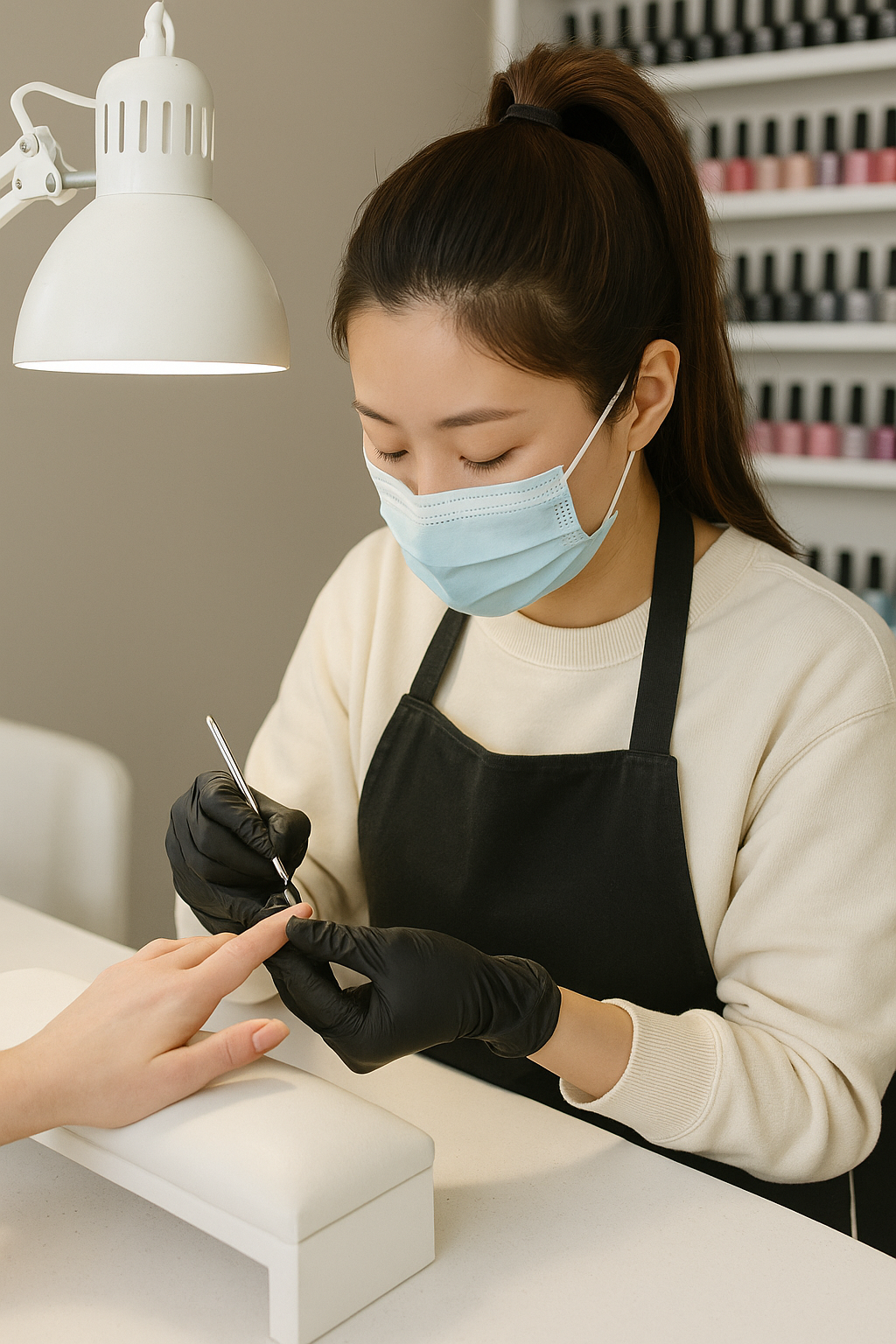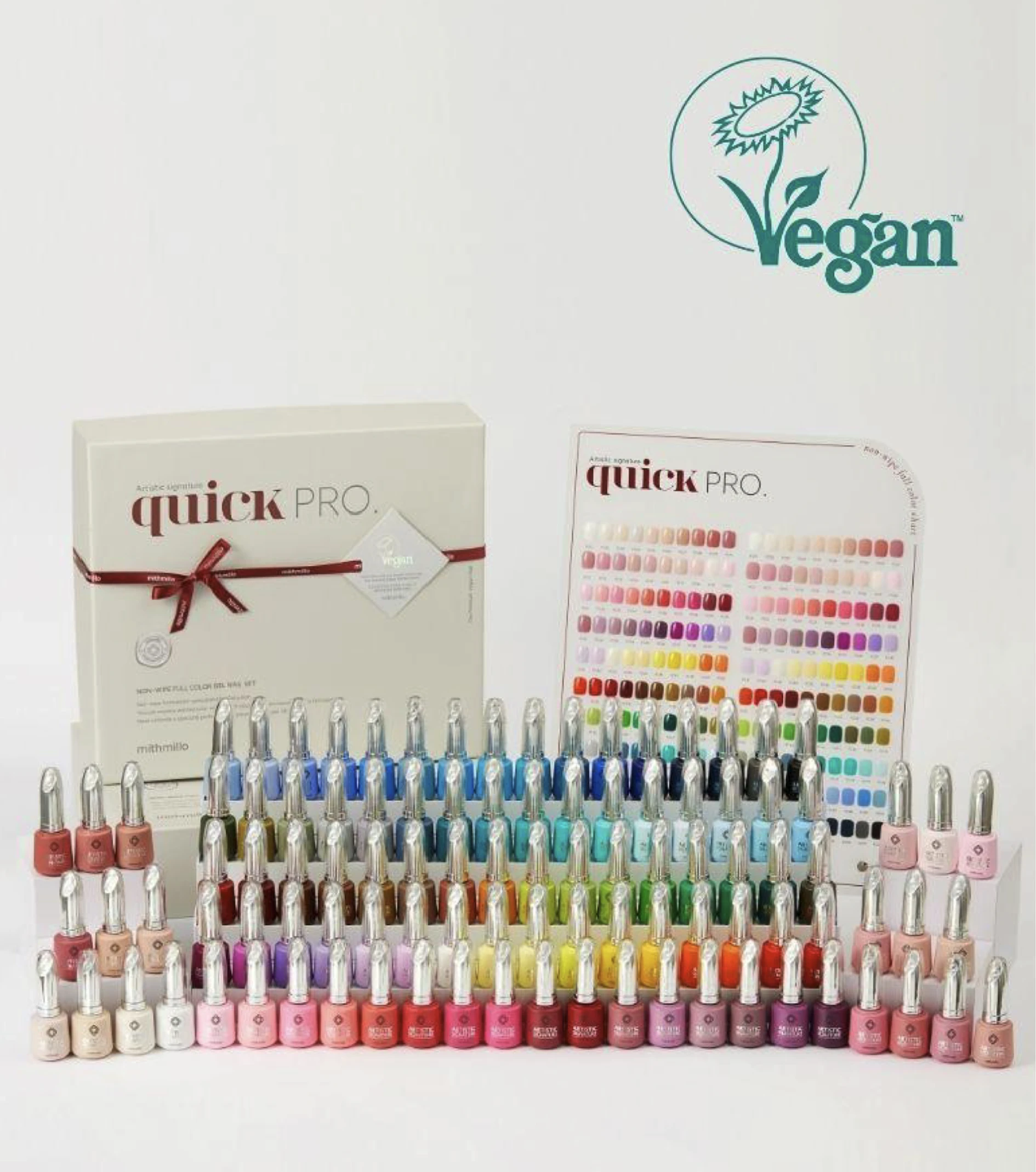Korean Nail Gels: Essential Information and Safety Guide
This section provides clear, fact-based information about Korean nail gels for both nail technicians and nail enthusiasts. The goal is to help you understand what these products are, how they work, how to use them correctly, and which safety and regulatory aspects apply in the European Union. The pages are educational and brand-neutral.



What are Korean nail gels?
Gel nail coatings are UV/LED-curable systems that contain oligomers/monomers (e.g., acrylates), pigments, and photoinitiators.
When exposed to UV or LED light, the photoinitiators trigger polymerization, forming a cross-linked film that is durable and glossy.
Korean gel systems are known for high pigment density, smooth self-leveling application, and consistent curing behavior when used according to the manufacturer’s instructions.
Responsible use and basic safety
- Skin contact: Avoid contact of uncured gel with skin and cuticles. Wipe any excess before curing to reduce the risk of irritation or sensitization.
- Thin layers and full cure: Apply thin coats and cure each layer for the time specified for your lamp type (UV vs. LED). Under-curing may leave residual monomer.
- Ventilation and hygiene: Work in a well-ventilated area, keep tools clean, and follow good salon hygiene practices.
- Removal: Use manufacturer-recommended soak-off or file-off procedures. Do not peel cured product from the nail plate.
- Sensitive users: Individuals with a history of acrylate allergy or hand dermatitis should consider patch testing under professional guidance and choose products accordingly (e.g., low-sensitizer, HEMA-free options).
- Children: The nail plate and periungual skin in children are more delicate; avoid exposure to uncured materials and professional-strength systems. When in doubt, do not apply.
Regulatory context (EU)
In the European Union, nail gels are cosmetic products and must comply with Regulation (EC) No 1223/2009.
Key elements include: an EU-based Responsible Person, a Product Information File (with Cosmetic Product Safety Report), ingredient labeling (INCI), notified formulas in the CPNP, and adherence to any restrictions set in the Regulation’s Annexes.
Professional users should remain informed about updates that affect monomers and photoinitiators used in UV/LED systems.
What you will find in this Information section
- Application & longevity: Step-by-step guidance for preparing the nail, applying base/color/top, and achieving durable results.
- Chemistry explained: Plain-language explanations of oligomers/monomers, cross-link density, photoinitiators, and curing parameters.
- Safety topics: Sensitization mechanisms, common allergens in nail systems, correct handling, and safe removal.
- Materials & effects: How textures (e.g., jelly, cat-eye, velvet) are achieved and what that implies for curing and wear.
- Comparative insights: Typical formulation and performance differences often seen between European and Korean gel systems.
- Sustainability & ethics: Notes on claims such as vegan or cruelty-free and how they relate to EU rules.
- Special populations: Practical precautions for sensitive users and guidance regarding children.
- Compliance checklist (pro use): Core EU requirements (RP, CPSR, labeling, CPNP) and good practice in a salon setting.
Who is this for?
The content is written for trained nail technicians who need concise, technical guidance, and for informed consumers who want reliable, non-promotional information before using gel systems at home or in a salon.
Always cross-check individual product instructions (lamp type, cure times, removal method) and comply with local professional practice requirements.
Note: The information provided here is educational and does not replace individual medical advice or the official instructions and safety documentation supplied with specific products.